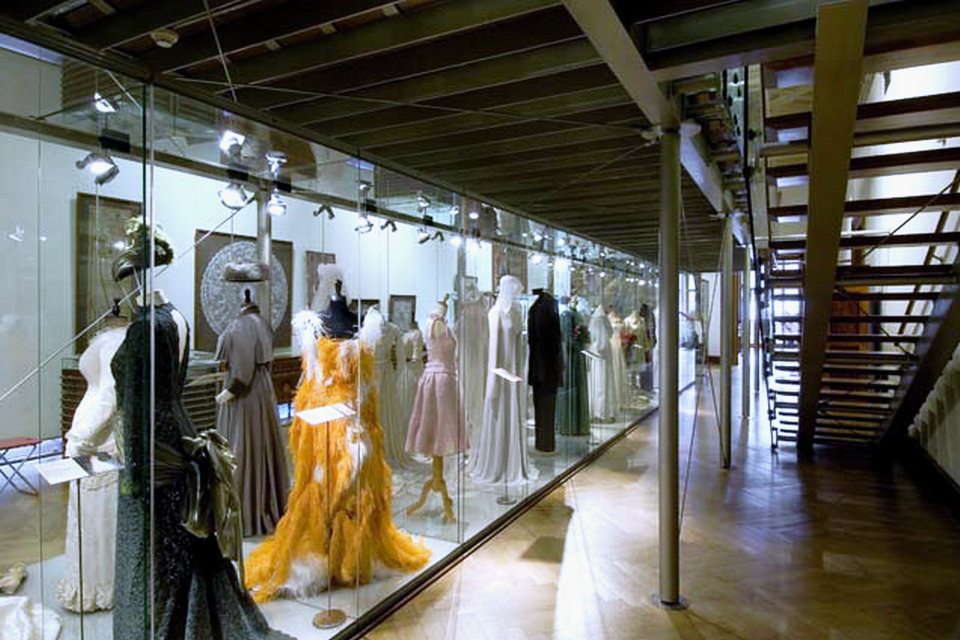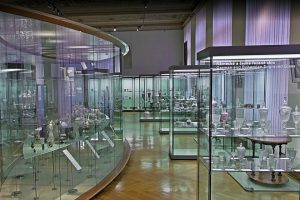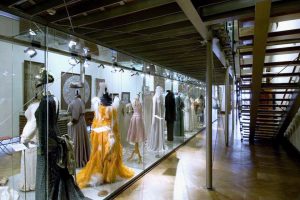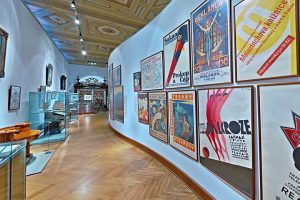The narrative monograph captures the history of Prague’s most important fashion races, such as the salons of Hana Podolská, Oldřich Rosenbaum, Arnoštka Roubíčková and František Bárta, and describes the development of fashion creation in the period 1900–1948.
We follow the development of the tailoring craft, its transformation into applied art, the transformation of world fashion and the transformation of tailors themselves from craftsmen to artists and traders. The publication captures the extraordinary fate of salon owners against the background of revolutionary historical events.
As a free continuation of the cycle “Czech Fashion”, carried out by the Museum of Decorative Arts in 1989 & mdash; 2007, the current exhibition on a set of eighty garments represents the rise and decline of Prague fashion salons in the period 1900 & mdash; 1948. Examples of thirty-five races, including the most luxurious companies such as Rosenbaum, Podolska, Roubíčková, Bárta, as well as medium-sized and small companies, show that the renowned Prague elegance was created by combining tradition of perfect craftsmanship and close contact with current French fashion trends and tailoring which were adapted to local tastes and lifestyles.
Luxury salons from the First Republic
You can visit the exhibition in the halls of the Museum of Decorative Arts in Prague. You can see art nouveau clothing, examples of timeless Prague elegance from the most luxurious parlors of the First Republic. Ladies will not miss the quilted dress of the war period and fashion, which witnessed social life before 1948. Directly impressed are the visitors from the evening toilet from the Madlén salon, which boasts the title of the Karlovy Vary model competition from 1946.
The exhibition will commemorate the most famous and popular fashion salon in the interwar Czech society – the salon of Hana Podolská. The curator of the exhibition is PhDr. Eva Uchalová, who has long been involved in fashion in the period of the First Republic and has written many publications on this subject, including Prague Fashion Salons 1900—1948, Model House Arnoštka Roubíčková Prague 1909–1943 or Oldřich Rosenbaum / Oldric Royce. A new monograph by Hana Podolská will be published during the autumn 2018, in which the author Eva Uchalová will present the results of her long-term research on the Model House Podolská.
Elegance at every step
The exhibition documents the work of salons with large format photographs by František Drtikol, František Vobecký, Willy Ströminger and other photographers. You can see footage from film weeklies. that show fashion shows where Adina Mandlova is seen as a model. You can see period magazines and hundreds of pictures of models from the salon of Hana Podolská from 1922 – 1943
The high quality of tailor’s work, luxury fabrics, knowledge of the latest Parisian fashion trends, adapted to the Czech art feeling, but also the entrepreneurship, business spirit and pleasant social character of the owner contributed to making Podolská salon the most popular and well-known fashion factory of interwar Czech society. His clientele consisted of actresses and other celebrities (eg Růžena Nasková, Jarmila Kronbauerová, Olga Scheinpflugová, Adina Mandlová, Růžena Šlemrová, Nataša Gollová, Jarmila Novotná, Eliška Junková and others), ladies from higher society, especially Hana Benešová, but occasionally women from the middle class of Czech society.
Prague Fashion Saloons exhibition
The elegance of the moderately wealthy and wealthiest Prague residents rule will be exhibited, along with other models. The museum is planning a major reconstruction, so it is good to visit the exhibition by that date. Models in such an amount will be seen in a very long time.
The model house of women’s toilets Hanna Podolská evolved from a small tailor’s workshop founded by seamstress Johanna Vošahlíková (1870 – 1972) in Nusle in 1905 and expanded after moving to the House of the Five Kings in Vyšehradská Street in 1907, when she also married Viktor Podolsky. In 1914 the workshop moved to the center of Prague and a year later opened a fashionable salon for ladies in the Lucerna Palace. He stayed there until 1931, when he moved to the New Palace of Riunione Adriatica at the corner of Jungmannova Street and Jungmann Square.
The Podolská model house survived the protectorate years and the difficult post-war period. Nevertheless, Hana Podolska worked in her fashion factory until 1954, when she was retired. However, she did not give up contact with the company employees, especially with the seamstresses, and kept watching the fashion. She died on February 15, 1972 at the age of ninety-two.
The Eva fashion race ceased to exist in 1991. However, Hana Podolska’s name has remained in the public consciousness today as a legend of interwar elegance and a brave, enterprising and extremely capable woman, personifying a society based on democratic principles and decent relations between people.
Museum of Decorative Arts In Prague
Founded in 1885, the Museum of Decorative Arts in Prague (UPM) is housed in a Neo-Renaissance edifice built in 1897–1901 after the designs of architect Josef Schulz. The Museum’s rich collections include decorative and applied arts and design work ranging from Late Antiquity to the present day, with focus on European objects, particularly arts and crafts created in the Bohemian Lands. The impressive interior of the permanent exhibition “Stories of Materials” offers visitors an excursion into the history and development of decorative arts: glass and ceramics, graphic art and design, objects made in metal, wood and other materials, jewelry, clocks and watches, textiles, fashion, toys and furniture.
An integral part of the Museum is the largest Czech library specializing in the arts and related fields. The Library offers visitors on-site loan and copying services, database access and searching in the ART (Art and Architecture) subject gateway.
The UPM presents its holdings at branch museums at the chateau in Kamenice nad Lipou and the Textile Museum in Česká Skalice. The Museum also administers the Josef Sudek Gallery on Úvoz Street near Prague Castle.
Our objective is to ensure that the Museum of Decorative Arts in Prague is a place for innovative learning that facilitates the understanding of the significance of objects of decorative arts and design, in combination with architecture and other art disciplines. We aspire to contribute to the improvement of the quality of life and the preservation of creativity in an increasingly uniform environment and to create a forthcoming space for the engagement of the public and the discussion of the cultural milieu and the world that surrounds us.






